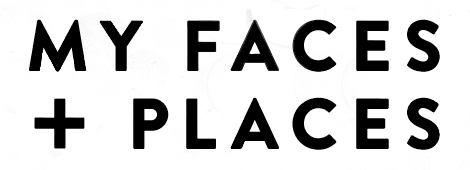Take Me Back To Barcelona
Barcelona is one of the most visited cities in the world. It is the capital of the autonomous region of Catalonia in northeast Spain and the centre of art and modernist architecture in Spain. We spend a few days visiting the highlights of this wondrous city accompanied by Dolors Jaen, a local guide.
In The Footsteps Of The Romans
The Romans called the settlement “Barcino” when they occupied the Iberian Peninsula in the 1st century BC. Then the Visigoths came in the early 5th century AD, followed by the Moors in the 8th century until the Spanish Reconquest in 722. Today the Roman and medieval buildings form the heart of 21st century Barcelona known as the Gothic Quarter. Four columns from the remains of the Roman temple of Augustus are displayed at the Barcelona History of Museum heritage site here. This historic area is a maze of narrow streets within the old Roman walls leading into squares and courtyards. If only the walls could talk, what a tale they would tell.
The labyrinth of streets in the Gothic Quarter lead to the Pla de la Seu, a huge square dominated by the imposing Barcelona Cathedral which was built between the 13 – 15 century in Gothic style. The façade is ornamented with gargoyles, animal images and religious stone reliefs. The commodious interior is glorious with lofty vaulted ceiling and arches, chapels and an elevated high altar. It is officially known as the Cathedral of Holy Cross and Saint Eulalia who is the patron saint of Barcelona. Eulalia was a thirteen-year-old martyr who refused to recant her Christian faith during the Roman times. She was tortured mercilessly and paraded naked in the square but miraculously it started to snow in mid spring at the time and the snow covered her modesty. She was crucified on an X-shaped cross and eventually beheaded. Her body is entombed in the Cathedral crypt. In a secluded cloister at the side of the Cathedral are thirteen live white geese that represent her age at the time of her death in honour of her occupation as a geese herder before her martyrdom. Visitors flock there to see the geese parading nosily in their pen.
Music To My Ears
When music and glorious designs get together expect an aesthetic marriage made in heaven. The Palau de la Musica Catalan is a magnificent concert hall designed by Lluis Domenech in a sumptuous Catalan Modernista style between 1905 and 1908 for the Orfeo Catala, a choral society in Barcelona. It is listed as a UNESCO World Heritage Site. From the amazing façade of mosaic encrusted columns and arches with floral motif to the breath taking interior, it is a masterpiece beyond compare.
The ingenious design of a splendid giant skylight clad in blue and gold stained glass flanked by two sides of stained glass walls allows natural light to illuminate the auditorium. The ornamentation, sculptures and stained glass decoration that adorn the concert hall is jaw dropping gorgeous. Words cannot do any justice to this “must-see” Catalan architectural jewel.
The concert hall has a capacity for 2,200 audience and is a prestigious venue for musical performances from symphonic and chamber music to choral and jazz performances. The beautiful auditorium is not just a pretty face; it is sympathetically and practically designed for perfect acoustic for musical performances. Daily guided tours are available to view the concert hall. www.palaumusica.cat
La Rambla Ramble
Taking a break from culture, we headed down to La Rambla, the happening place in the city. It stretches for 1.2km alongside the Gothic Quarter from Port Vell in the south to Placa Catalunya in the north. La Rambla is a tourist magnet with pedestrianized boulevard teeming with shops, cafes, bars, restaurants, souvenir kiosks, the Liceu opera house, flower stalls and the popular La Boqueria food market.
This bustling market is a cornucopia of fresh produce, meat, seafood and numerous food stalls. Beware of pickpockets in the very crowded areas of La Rambla.
Glorious Gaudy Gaudi
The name that is most synonymous with Barcelona is Antoni Gaudy (1852 -1926), artist and architect extraordinaire and hailed as “The Father of Catalan Modernism”. His extraordinary architectural designs with their trademark gaudy colours and quirky shapes and geometrical forms are the icons of the city, many with UNESCO World Heritage acclaim. It has put Barcelona on the map. As a child Gaudi suffered from poor health and crippling rheumatism. Unable to join the jaunt of other children, he spent most of his time in solitude observing and studying nature, which became the main influence in his work apart from religion. He had a fondness for dragons and at the last count there are 400 dragon images incorporated in his designs appearing in eaves, coiling round pillars and cornices, balconies and draping on roofs.
We strolled down Passeig de Grácia on Barcelona’s most expensive commercial and shopping precincts to see two of Gaudi’s masterpieces. The Batlló, once a private house, had been redesigned by Gaudi between 1904 and 1906 in his signature modernist style. The ornate façade are peppered with colourful mosaic works known locally as trencadis and balconies that look like skulls giving rise to its nickname the “House of Bones”. The undulating roof with scaly tiles represent the dragon that Saint George slayed. Fantastical wonky turrets adorn the roof. The interior is so extravagantly ornate and quirky that exploring the house is like being in a fairy tale castle. It is open to the public. www.casabatllo.es
Across the road is the Casa Mila, another of Gaudi’s iconic work that was the last private home he ever designed in 1910 for a businessman named Pere Mila. In contrast this building has stone façade in natural rock colour earning its nickname “La Pedrera” or stone quarry. The undulating façade and ornate roof with stacks of chimneys that look like the storm troopers from Star Wars bear Gaudi’s hallmark. It was said that George Lucas got his inspiration from them. The outside may be plain but the interior bears the signature touches of Gaudi in a riot of gaudy colours and quaint designs. Today it belongs to a private company but it is open to the public. www.lapedrera.com
Gaudi’s Magnum Opus
A visit to Barcelona is not complete without paying homage to Gaudi’s magnum opus, the Sagrada Familia, Church of the Holy Family. It is a UNESCO World Heritage Site and consecrated by Pope Benedict XVI in 2010 as a basilica. It is the only ecclesiastical building in the world that started construction in 1882 and is still work in progress. Its delay has been hindered by short of fund and the Spanish Civil War.
Originally started by the architect Francisco Paula de Villar in 1882, it was taken over by Gaudi in 1883 and he decided to stamp his own mark on the design by creating the ultra modernist designs of that era. Given this blank canvas Gaudi unleashed his skill to create an ambitious design taking inspiration from nature and his deep religious belief as a devout Catholic. Works from the Moors, Middle East, Japan and China also inspired him. He lived and breathed the project to the extent of obsession.
Sadly he was killed in an accident in 1926 when he was hit by a tram on his way to work with only less than a quarter of the work completed. He left behind a legacy for other architects to continue his dream. After 135 years, it is still being built and is expected to be completed by 2026, the centennial of Gaudi’s death.
Heaven On Earth
The exterior of the basilica reflects its unfinished state with unpainted façades and builders’ cranes hovering round it. But the stone reliefs and sculptures on the two finished façades depicting the nativity, passion, death and resurrection of Jesus Christ are spectacular. Every aspect of the designs is symbolic. On the nativity façade a tortoise and a turtle support a column each on their back representing land and sea.
When completed, it will have 18 spires of which twelve spires will represent the twelve apostles, four will be dedicated to the four Evangelists, one for Virgin Mary and the tallest spire will be bestowed as the Jesus Christ tower. The three entrances to the basilica symbolise Faith, Hope and Charity. Ornamental towers on the roof bear sculptures of seasonal fruits that are grown in the region.
Stepping inside the basilica is a spellbinding experience like heaven on earth. Lofty columns soar to dizzy heights simulating forest trees spreading their branches over the vaulted ceilings. The exquisite stained glass walls and windows catch the sunrays throwing soft colourful lights onto the marble floor. Every inch of the basilica is magnificent and awe-inspiring in its aesthetics. It is an unmissable pilgrimage in Barcelona. It attracts over 3 million visitors a year. Book tickets in advance online to avoid long queue www.sagradafamilia.org .
.
Escape To The Seaside
Much as I enjoy exploring the sights in the city, I like to stay away from it for peace and quiet after battling through the crowds all day. I find respite in my accommodation at the wonderful Hilton Diagonal Mar Barcelona with the beach just 400m away. It has all the creature comforts of a luxury hotel with a great service to boot and the Puro Beach, a pool deck with sun lounges to catch the rays and sea breeze. The beauty of staying away from the city centre is the tranquillity and untouristy ambience in the Diagonal area, yet only minutes away by the city’s metro. That’s the wonderful thing about Barcelona – whether you are a culture vulture, an art lover, a party animal or beachcomber, it has something for everyone. Barcelona is fringed by 4.5km of sandy shore. It is a city that will lure you back again and again with its alluring culture, cuisine and charm. Bella Barcelona!
For a private tour of Barcelona and other parts of Spain, contact Just Explore, a company specialising in personalised tours for small groups.
For more information check this out: The Most Luxurious Airbnb Villas in Spain
Related posts on Spain (Madrid & Andalusia)
Madrid – A Chic and Cultured City
An Andalusian Adventure In Ronda & Seville
An Andalusian Adventure Continues In Cordoba and Granada
©MyFacesAndPlaces.co.uk




















Lynne Bernice Sims | Jul 9, 2017 at 12:37 pm
A wonderful insight into Barcelona’s magical splendour, thank you Helen!
Michael Oon | Jul 10, 2017 at 8:48 pm
Thank you for your kind comment Lynne. Hope you can visit this amazing city one day. – Helen
Lynne Bernice Sims | Aug 18, 2017 at 9:31 am
I haven’t been to Barcelona for thirty years, but one can never forget the excitement and joy of the city.
This article captures that.
Pingback:Best Beaches in Spain - AllTheRooms.com | Mar 29, 2018 at 4:39 pm
Pingback:Best Beaches in Spain - The ATR Blog | May 26, 2018 at 5:18 pm